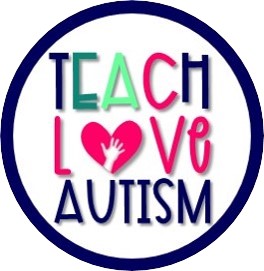Creating a Special Education Classroom Schedule
Sharing is caring!

Creating a well-balanced and inclusive classroom schedule is a vital task for special education teachers. The schedule must consider the diverse needs of students, the support provided by paraprofessionals, inclusion classes in other parts of the school, and the successful integration of essential lessons throughout the day. In this blog post, we will explore key considerations and practical tips for designing a classroom schedule that works for everyone. And I’m literally showing you how I use an Excel spreadsheet to create one!
Understanding Your Students’ Needs
Initially, start by gaining a comprehensive understanding of your student’s individual needs, abilities, and learning styles. Consider factors such as attention span, sensory sensitivities, preferred routines, and areas of challenge. This knowledge will enable you to tailor the classroom schedule to address their unique requirements, ensuring an optimal learning experience for all. Most of this if you have new students that you don’t know would come from the individualized education plan (IEP). This means you may find out a student can only work independently for 15 minutes, so you should consider scheduling their time for that long, or be able to provide paraprofessional support to extend that time.
Know the Non-negotiables:
Next, every school has a unique setup and things need to run a certain way. There are parts of a school day that are considered non-negotiables in my opinion. These are things like lunch, recess, specials, and sometimes inclusion classes that are all scheduled outside of your control as the special education teacher. You just have to fit them in and make them work within your own classroom schedule. This is typically where I start to plug those days and times into my schedule because I know I can’t teach anything else then. It usually looks something like this:

With this classroom schedule schedule you can see I put all the things are non-negotiables that typically your principal will assign to your students and staff. This includes arrival, breakfast, lunch, specials, our “earn time” for behavior reinforcement and dismissal. Also, you will note that some students go out for inclusion classes (ELA, Science, and Morning Meeting). These students I will need to remember will not be available for lessons in my classroom at that time, so I have to be cautious of planning any whole group lessons I may want that student to participate in.
Add in Your Whole Group Lessons
Identify the essential lessons that need to be taught and allocate dedicated time slots in the schedule for each subject or skill area. Prioritize core subjects, such as literacy and math, but I also include lessons like morning meeting, afternoon meeting, Ensure a balanced distribution of instructional time throughout the day to maintain students’ engagement and optimize learning outcomes. Let’s take a look at that schedule I started now with the things we have talked about:

Now I have added in color coding to help everyone read the schedule easier. If you notice non-negotiables are yellow, and whole group lessons are green.
Consider Individual and Small Group Instruction:
Special education classrooms often require individualized or small-group instruction to meet student’s diverse needs. Allocate specific time slots within the schedule for one-on-one instruction or small group activities. This allows for targeted instruction, differentiated support, and opportunities for peer interaction and collaboration. I always made an effort to meet with each student individually each day if I could. If not, we would do a small group of 2-3 students. Also, I like to have one paraprofessional run a center or station where students can work at. This means we would need to add this to the student’s schedule.
You may also need to collaborate to find times for student-related services (speech therapy, occupational therapy, vision and hearing support, and more). They may need to go on your classroom schedule for push-in or pull-out sessions with a therapist. And finally, add the independent work time that students will do in the classroom on their own!
Let’s see that schedule with all of that now:

As you can see here there is a lot more filled into the schedule. Individual and group instruction in the classroom and even small group instruction with therapists for related services have been added. And independent work time for students to complete tasks has been included.
Breaks and Transitions in Your Classroom Schedule!
Don’t forget that during the school day, it is important to build breaks. Students will need downtime and time to transition from one part of their schedule to another. Students may have in their IEPs that they need a certain amount of breaks or breaks at certain times of the day. You will want to put this into your schedule. Also, something to consider is if your student has their own individual visual schedule in the classroom then they will need time to check it between different lessons. Also, students with limited mobility or behavior concerns with transitions may need time and assistance to do this successfully.
I have now added these to the schedule so you can see them. I labeled everything a break in this example. However, for some students, it may be supporting with transitions in our out of the classroom as well.

And once you have your schedule made, you can display something like this for the whole class.

Or you can use individual schedules like these for your students!

Relflect on Your Classroom Schedule
Schedule regular check-ins and reflection periods to evaluate the effectiveness of your classroom schedule. Monitor students’ engagement, behavior, and progress to identify areas that may require adjustments or additional support. Seek feedback from paraprofessionals, colleagues, and students to gather different perspectives and ensure the schedule’s ongoing effectiveness. Be flexible! The schedule will probably be changing many times in your classroom. Typically, this happened to me if we got new staff or students, had a therapy session that needed to move. Also a student needed more break time than originally anticipated, or an inclusion class time got changed.
Designing an inclusive classroom schedule that accommodates the needs of students, paraprofessionals, and essential lessons requires careful consideration and collaboration. Once you have taken into account all the things mentioned in this blog post, you should have a good plan for your classroom schedule.
Need some materials to create your whole class or individual schedules for students? I’ve got you covered here! Click on the image to see more about that product!
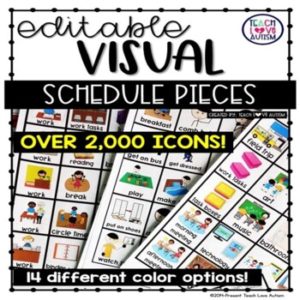
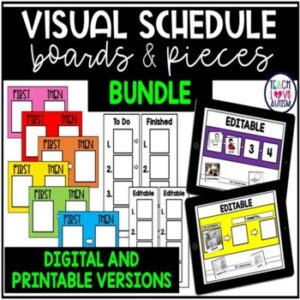
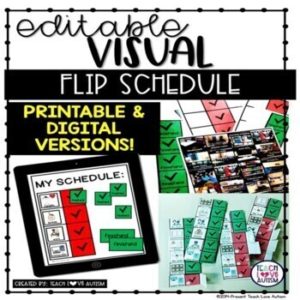
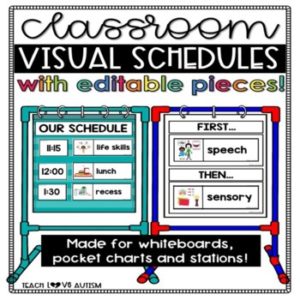
And this bundle has all the things you could need to start the school year including schedule materials! Check out my shop for more resources to support the learners in your classroom!






